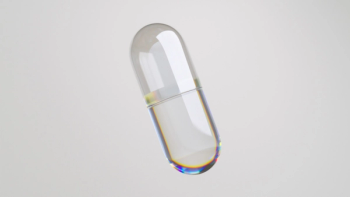
Wear Your Caffeine? Will a Caffeine Bracelet Catch On?
Joule, a start-up company out of Toronto, has a unique proposition for getting consumers their daily supply of caffeine: a caffeine bracelet.
Joule, a start-up company out of Toronto, has a unique proposition for getting consumers their daily supply of caffeine: a caffeine bracelet. The bracelet is fitted with a transdermal patch, which the company says delivers 65 mg of caffeine, the equivalent of one cup of coffee. The company calls it “the world’s first transdermal caffeine bracelet using FDA-approved patches.”
The transdermal patch works similarly to nicotine and other transdermal medication patches and offers several benefits over oral caffeine consumption, including avoiding teeth staining and the calories from caffeinated drinks, the firms says. Because the patch delivers a slow, steady release of caffeine to the body over four hours, it doesn’t cause caffeine “jitters” and maintains “a base level of caffeine in the body, thereby avoiding an uncomfortable spike in energy or a crash.” The patch is also said to deliver caffeine to the body quicker than oral intake. Orally ingested caffeine undergoes digestion in order for the body to absorb the caffeine, a process that can take between 15 to 45 minutes.
The company is currently gathering funds for the project on Indiegogo and says product is set to ship in July.
Adam Paulin, inventor and cofounder of Joule, tells Nutritional Outlook that the company plans on “registering Joule as a natural health product because it contains natural extracts with clinical potency.” The company’s caffeine source is guarana, which Paulin says “has about twice the concentration of caffeine compared to coffee seeds.”
“All of the ingredients in Joule do fall into GRAS [Generally Recognized as Safe], but by obtaining FDA approval for our more potent formulation, we can make superior claims since the extracts will offer superior results to competitors with less purity in their formulations,” he adds. He also says the company may begin to conduct studies on Joule in Q1/Q2 of this year and adds that the transdermal patch could also be used for other types of nutrients, such as vitamins and minerals.
In addition to being used as a standalone source of caffeine, the company says Joule can be used as an in-between caffeine source by those who still like to drink coffee as well. It can also be used by those looking to reduce their intake of caffeine-containing beverages.
“Joule also starts absorption as soon as it’s placed on the wrist, whereas you won't be able to enjoy your morning coffee until you get to the front of the cafe line or, at earliest, until you brew it,” Paulin says. “The difference is getting your jolt started as soon as you wake up to, earliest, 20-30 minutes afterwards or even up to an hour.”
“The transdermal patch releases the caffeine into the skin gradually because it has an adhesive property that only lets the chemicals into the system as it is dissolved by the body's heat. This keeps the administration gradual, and thus the energy supply is also gradual and consistent until all the caffeine is administered,” he says.
Also read:
Editor-in-Chief
Nutritional Outlook magazine
jennifer.grebow@ubm.com
Newsletter
From ingredient science to consumer trends, get the intel you need to stay competitive in the nutrition space—subscribe now to Nutritional Outlook.





